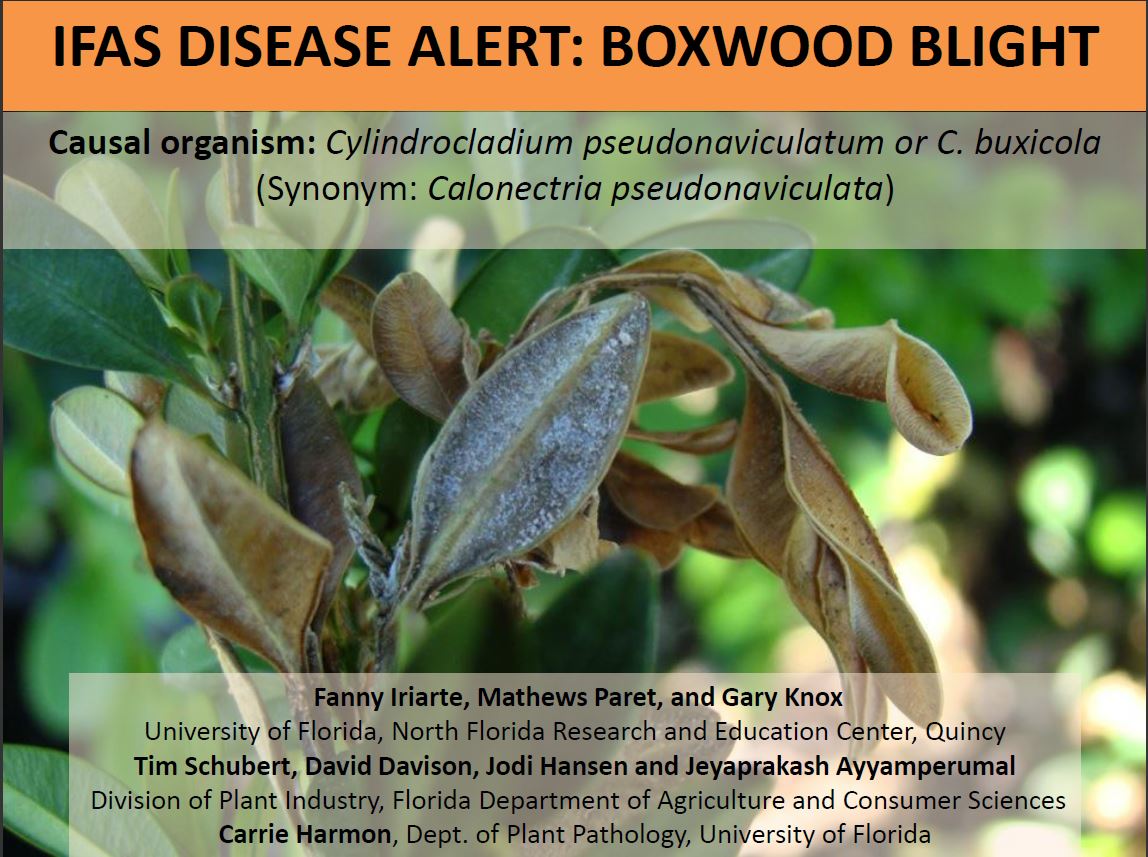
by Fanny Iriarte | Apr 1, 2016
Fanny Iriarte, Mathews Paret, and Gary Knox, University of Florida, North Florida Research and Education Center, Quincy In April 2015, Boxwood Blight was confirmed in a commercial nursery in North Florida (Pest Alert: Boxwood Blight) In February 2016, the disease was...
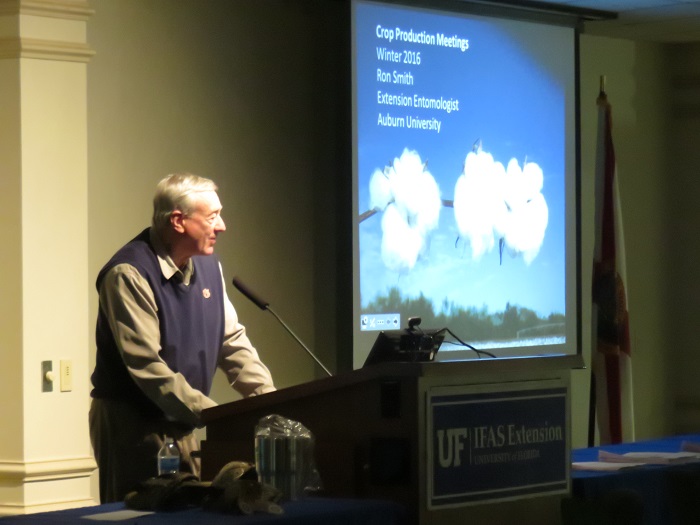
by Ethan Carter | Mar 18, 2016
Jackson County Extension hosted the 2016 Panhandle Row Crop Short Course on Thursday, March 3, 2016. Extension Specialists from Florida, Georgia, and Alabama came to relay new and pertinent information concerning crops to farmers. Attendees were able to attain CEUs...
by John Doyle Atkins | Feb 19, 2016
After the 2015 growing season, depressed prices, areas of no rain for 8 weeks and yields ranging from zero to dancing around the 6,000 pound per acre mark, Santa Rosa County producers are looking toward the 2016 season with a heightened degree of concern. There are...
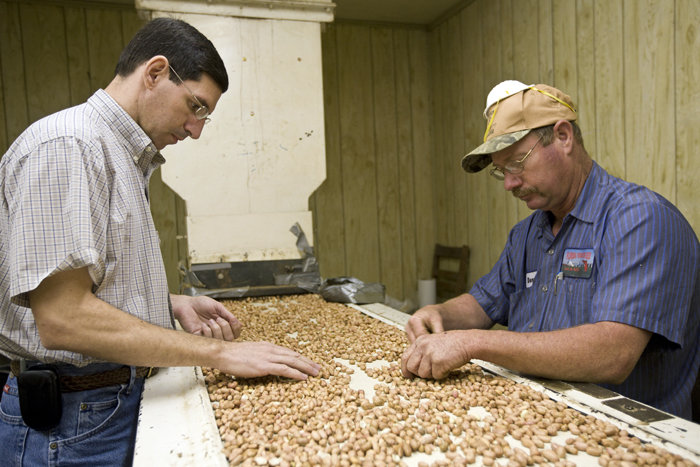
by btillman | Feb 5, 2016
Yield Potential While the majority of seed for peanut planting this year will be Georiga-06G, there are several varieties in seed increase that farmers should become familiar with. Table 1 shows the performance of peanut varieties in Florida over the past four years...
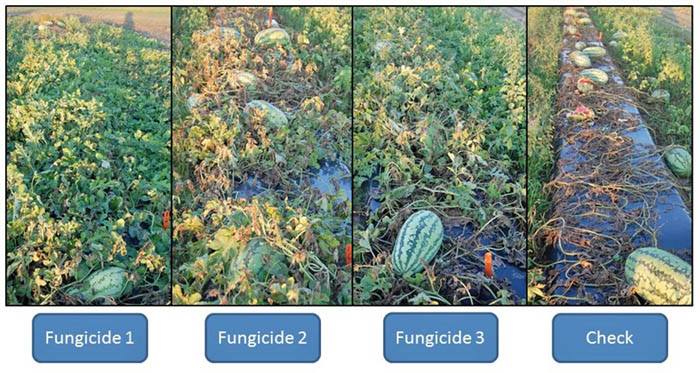
by Nicholas Dufault | Jan 29, 2016
So far, mild winter temperatures and ample rainfall have led to multiple disease issues in many of northern Florida’s winter crops (e.g. forages). While temperatures are predicted to be below normal for the months February, March and April, it is projected that...
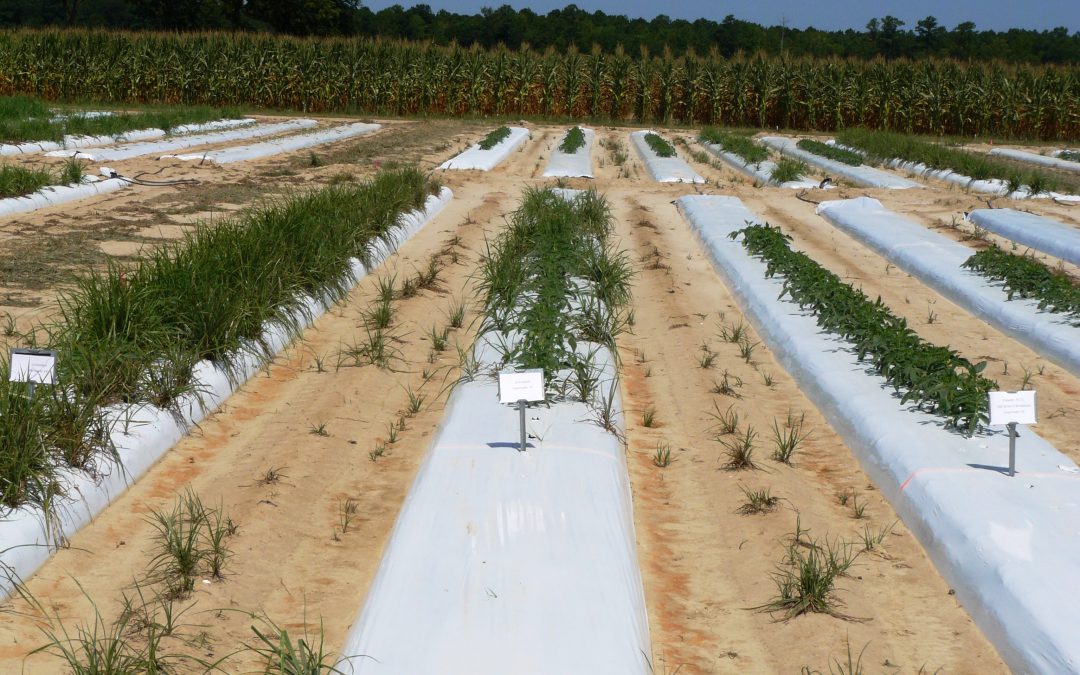
by Josh Freeman | Nov 13, 2015
Plastic mulch technology has come a long way in the last 15 years and has made another exponential jump in the last 5 years. Traditionally plastic films used in plasticulture production systems were simple, single layer low density polyethylene films. These are...






